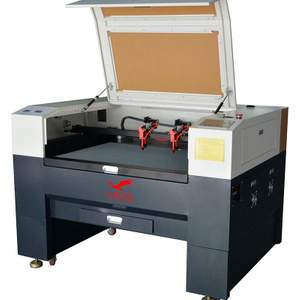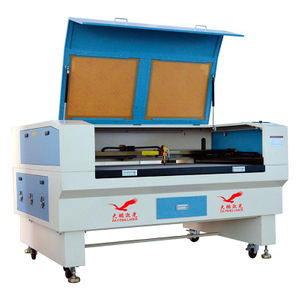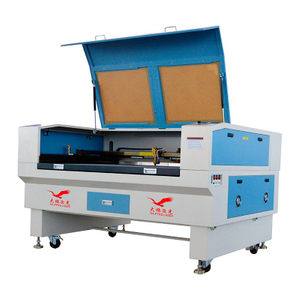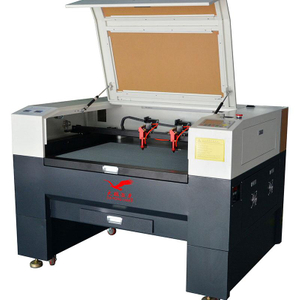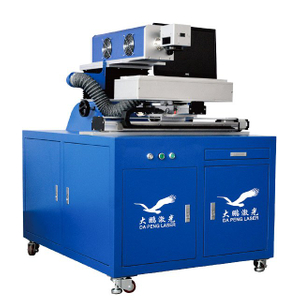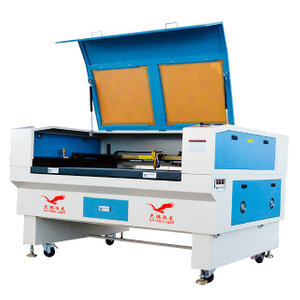CO₂ Laser Cutting Machine for PCB Stencil Frame and Stencil Film Laser Cutting
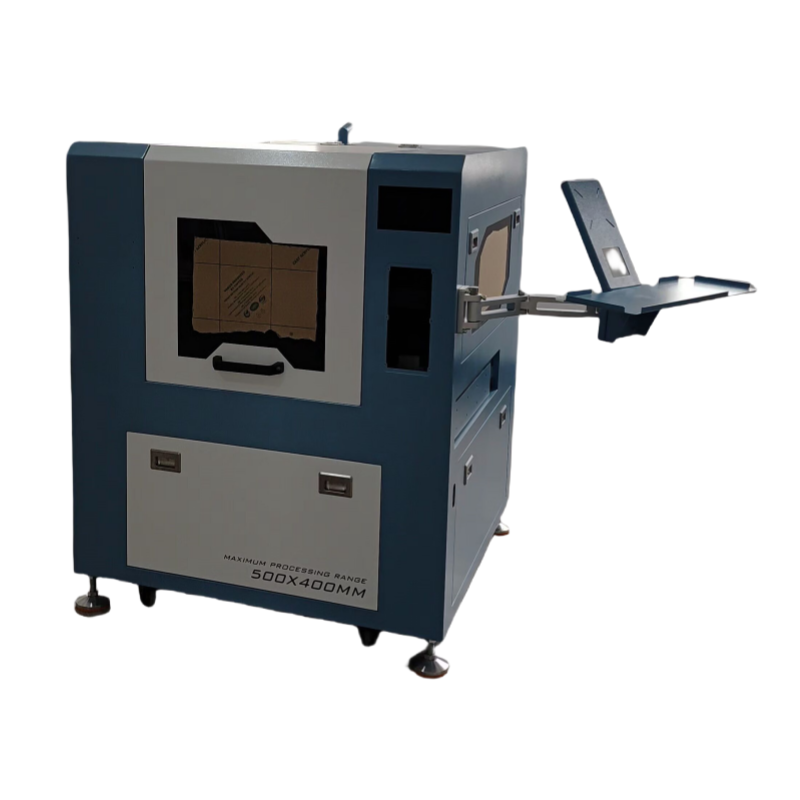
A CO₂ laser cutting machine is an advanced tool used in PCB stencil frame and stencil film laser cutting. These machines employ CO₂ lasers (typically with a wavelength of 9.3μm) to precisely cut materials such as stainless steel, PET, polyimide, and other flexible films used in Surface Mount Technology (SMT). The primary purpose of these machines is to create accurate, high-quality stencils for solder paste application in the PCB assembly process.
How CO₂ Laser Cutting Works for PCB Stencil Frames and Films
Laser Source: The CO₂ laser is the core technology. It emits a focused beam of light at a wavelength of 9.3μm, which is absorbed by most non-metallic materials (like PET, polyimide, Kapton) and metals (like stainless steel).
Material Preparation: A stencil design is created using CAD software (like AutoCAD or CorelDraw), which is then converted into a laser-readable format. The materials used for stencils can range from stainless steel (for durability) to polyimide and PET films (for flexible or prototype applications).
Laser Cutting Process: The CO₂ laser beam is directed onto the material, where it either melts, vaporizes, or burns away the material to create precise stencil openings. This process results in clean edges and high precision, especially for small apertures required in modern high-density PCBs.
Mounting on Stencil Frame: Once the stencil film is cut, it is usually attached to a stencil frame. The frame ensures that the stencil stays taut during use, providing an even solder paste deposition.
| Project ITEM | Unit | JG-4050D/4050DC |
| Feed Width | mm | 400×500 |
| Processing Range (W×L) | mm | 400×500 |
| Cutting Speed | mm/s | 0-400 |
| Laser Type |
| CO₂ Metal Laser |
| Laser Power | W | 30/55 |
| Laser Wavelength | μm | 9.3 |
| Cutting Accuracy | mm | 0.03 |
| Positioning Accuracy | mm | 0.01 |
| Total Power | KW | AC220V 4.0 |
| Net Weight | Kg | 600 |
| Main Engine Size (L×W×H) | mm | 1150×1100×1400 |
| Combined Size | mm | - |
| Supported Graphic Formats | - | DXF/AIPLT |
| Sucker Type | - | Vacuum Chuck |
| Cutting Energy | - | 0-99% Software Control |
| Stratified Cutting | - | Multiple cutting parameters can be set by color |
| Heat Dissipation Mode | - | Air Cooling/Water Cooling |
| Operating Temperature | °C | 5-30 |
| Applicable Materials | - | 3M, EVA, PET, PC, PAPER, POLO, OCA, Polarizer Film, Optical Film, Backlight, Foam, Optical Film, Leather, Electronic Insulation Materials, Double-sided Adhesive, and other non-metallic materials |
Key Advantages of CO₂ Laser Cutting for PCB Stencil Frame and Stencil Film
High Precision: CO₂ laser cutting ensures very fine tolerances, making it ideal for high-density and fine-pitch PCB designs. The laser can accurately cut pads, vias, and traces to very small dimensions, ensuring perfect paste application.
No Physical Contact: The process is non-contact, meaning the material is not physically touched by any cutting tool, reducing the risk of deformation, damage, or contamination during the cutting process.
Flexibility: The laser cutting machine can handle a variety of materials, from durable stainless steel to flexible polyimide and PET films. This makes it versatile enough for both rigid and flexible PCB applications.
Complex Geometries: Laser cutting allows for the creation of complex and intricate designs that might be difficult or impossible to achieve using traditional mechanical methods.
Clean Edges: The laser produces smooth, precise edges without the need for secondary finishing or cleaning processes. This ensures a high-quality finish and reduces post-processing time.
Customizable: Each stencil can be customized to fit specific PCB designs, with different aperture sizes and shapes. Laser cutting provides the flexibility to adapt to varying requirements, including for fine-pitch components and multi-layer PCBs.
Rapid Production: CO₂ laser cutting is faster than traditional mechanical cutting methods, making it ideal for quick-turnaround projects, including prototyping and small-batch production.
Environmentally Friendly: Since the cutting process is clean and precise, there is little waste, and no chemicals are required for the cutting process.
Applications of CO₂ Laser Cutting for PCB Stencil Frame and Stencil Film
Solder Paste Application: The primary application of PCB stencils is to apply solder paste onto PCB pads in a controlled and uniform manner. Laser-cut stencils ensure that paste is applied precisely, even for very small or fine-pitch pads.
Multi-Layer PCBs: Laser cutting ensures high precision for multi-layer PCB designs, where accurate paste application is necessary for different layers.
Flexible PCBs: For flexible or soft substrates, laser-cut stencils provide the flexibility required to handle flexible designs, ensuring accurate paste placement on non-rigid boards.
Prototype Development: Laser cutting is ideal for creating stencils for prototypes or small-batch runs where quick production and customization are necessary.
Materials for PCB Stencil Film Laser Cutting
Stainless Steel: Provides durability and excellent longevity for mass production and high-volume PCB assembly.
Polyimide (Kapton): Used for high-temperature or flexible PCBs, polyimide films are often laser cut for flexible PCBs.
PET (Polyethylene Terephthalate): A more affordable option often used for prototypes or short-run production.
Nickel-Plated Steel: Offers a balance of durability and cost-effectiveness, often used for medium-quantity production runs.
Additional Features and Equipment Specifications
CO₂ Laser Power: Laser cutting machines often use CO₂ lasers with power ranging from 30W to 150W or higher, depending on the material and cutting speed required.
CCD Camera for Positioning: Some high-end machines come with a CCD camera for precise alignment and registration of the stencil, improving the accuracy of cuts for multi-layer or complex designs.
Vacuum System: Many CO₂ laser cutting machines include a vacuum system that helps to secure materials in place, reducing the chance of misalignment during cutting.
Auto Focus System: An automatic focusing system ensures that the laser beam remains at the correct focal length for cutting, further enhancing precision.
Dust and Fume Extraction: A dust extraction system is used to remove fumes and particles created during the cutting process, ensuring a clean working environment.


Conclusion
CO₂ laser cutting for PCB stencil frame and stencil film fabrication is a highly efficient and precise method, ensuring accurate solder paste application for high-quality PCB assembly. This method is ideal for both flexible and rigid PCBs, providing rapid prototyping, low-volume production, and customization to meet specific design needs. The precision, flexibility, and speed of CO₂ laser cutting make it an essential technology in modern Surface Mount Technology (SMT) and PCB manufacturing.



















